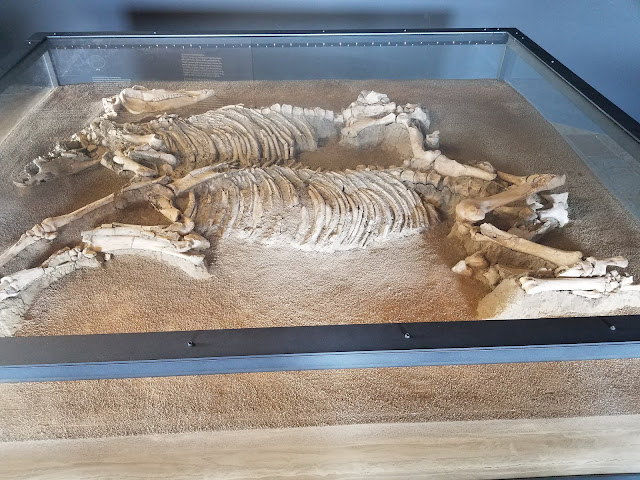 |
| Altino (Altinum in Latin) was the ancient precursor to Venice. Humans have been living there since at least the 400s BC. |
 |
| Over 200 pre-Roman tombs have been unearthed at Altino. The city is named after a local god, Altno. |
 |
| Contents of tombs. |
 |
| Many other civilizations' gods were worshiped in Altino, including Belatukadro, the Celtic god of war. |
 |
| The Venetic language of Altino was written in the Etruscan alphabet, but sounded more like Latin. |
 |
| Horses were a sign of status in the ancient Veneto region. Over 30 horse skeletons have been unearthed in pre-Roman Altino, most likely victims of sacrifice in connection with the Cult of the Sun. |
 |
| Altino likely became a Roman city in the 100s BC. The Via Annia linked it to Rome and Aquileia, and the city, equidistant between Ravenna and Aquileia became an important Adriatic trade hub. |
 |
| Altino in the 2nd century AD. |
 |
| Roman painting fragments. |
 |
| Roman keys and lamps. |
 |
| Roman gravestone. |
 |
| Reproduction of a Roman fishing net. |
 |
| Roman gladiator toy. |
 |
| Half of Altino's population under Roman rule were slaves or freed slaves, mostly Greek in origin. |
 |
| Italian soldiers were trained in Altino during WW1. |
 |
| The National Archaeological Museum of Altino is in the process of being developed, but is still an impressive gem just outside of Venice. |

No comments:
Post a Comment